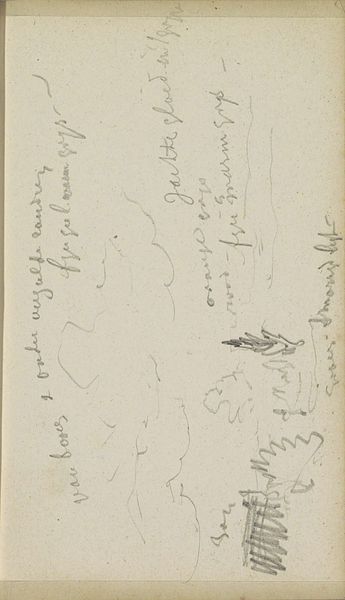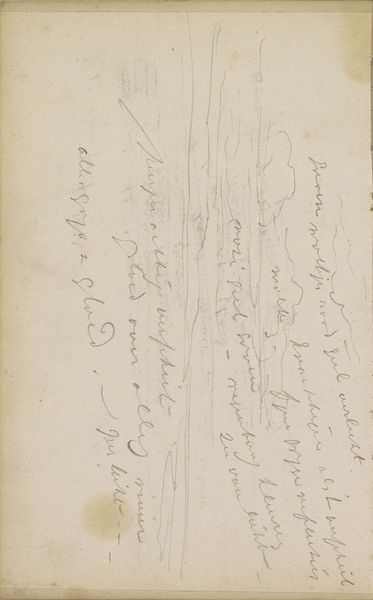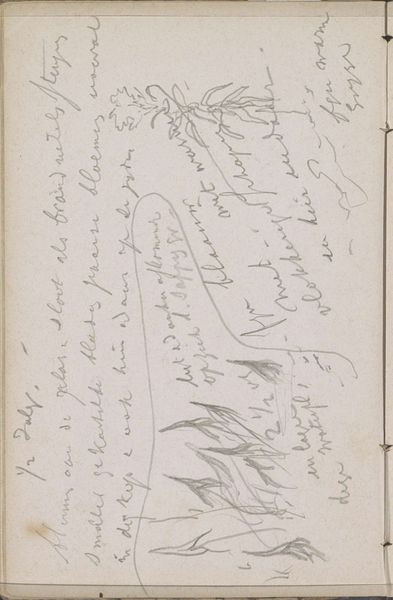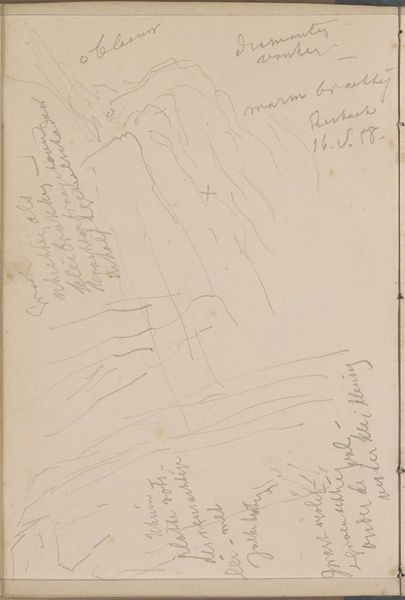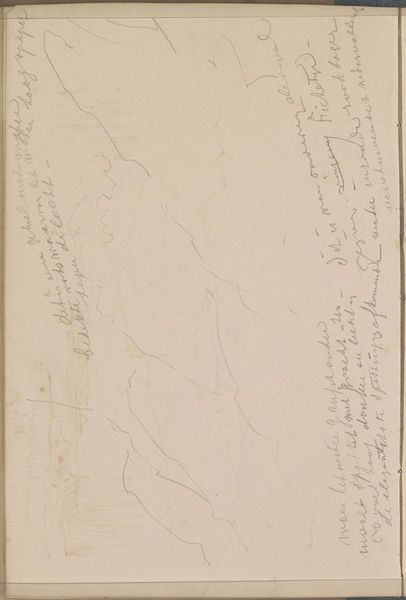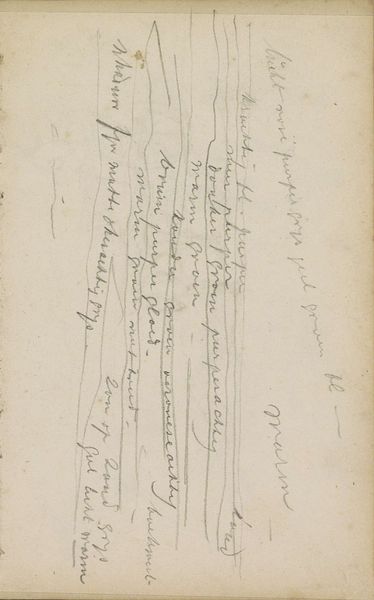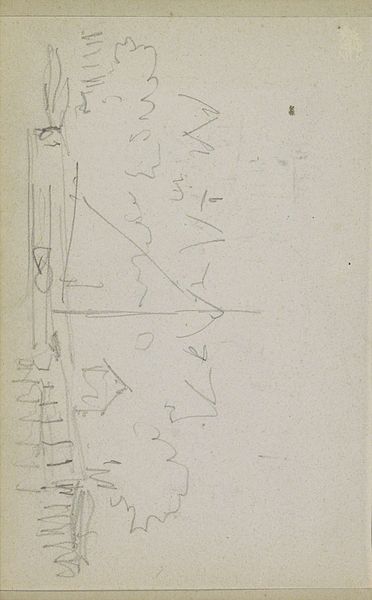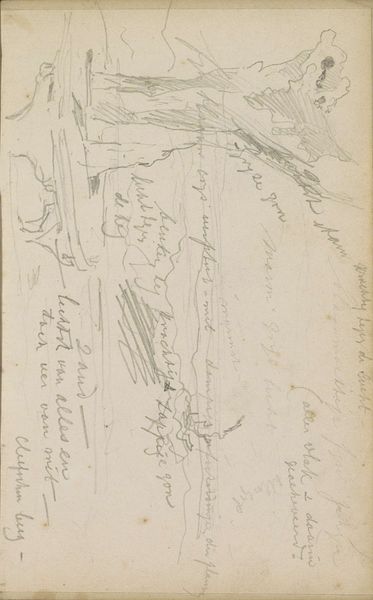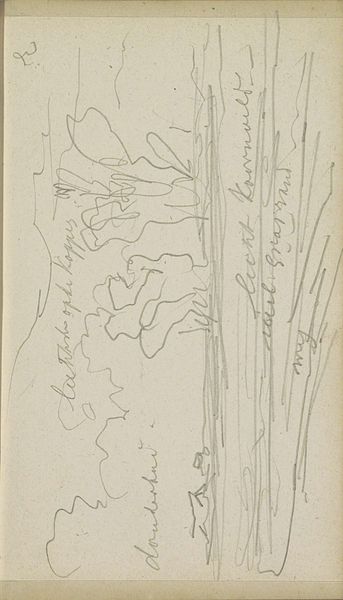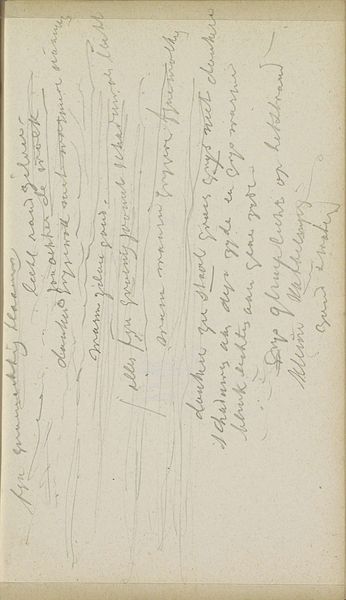
Copyright: Rijks Museum: Open Domain
This sketchbook page, "Planten," was made by Johannes Tavenraat sometime in the 19th century. It's a simple graphite drawing on paper, common materials for sketching and note-taking, which democratized the process of art-making. The choice of graphite and paper influences the artwork's appearance, creating a delicate and ephemeral quality. Graphite, with its soft, grey tones, allows for subtle gradations of light and shadow, while the paper provides a textured surface for the artist's hand to interact with. The marks on the page – the quick strokes and notations – are evidence of Tavenraat's direct engagement with the natural world. He's using the sketchbook as a tool for observation and documentation, capturing the essence of the plants. This piece invites us to think about the value we place on different kinds of artistic labor. While a finished painting might be seen as a high art object, a simple sketch like this reveals the artist's process, the careful observation, and the intimate connection to the subject.
Comments
No comments
Be the first to comment and join the conversation on the ultimate creative platform.
